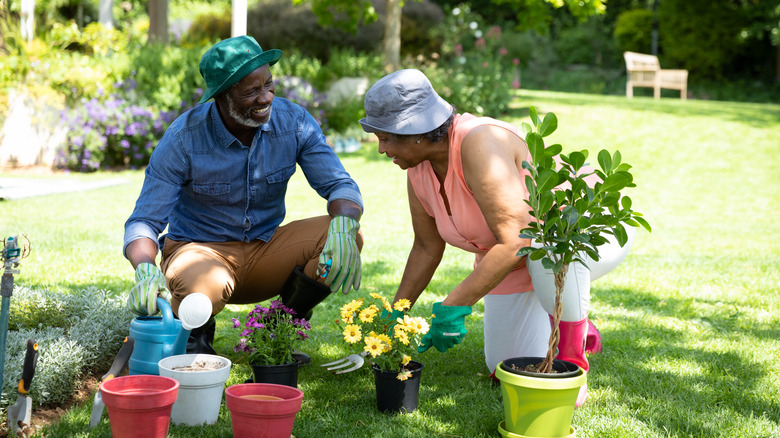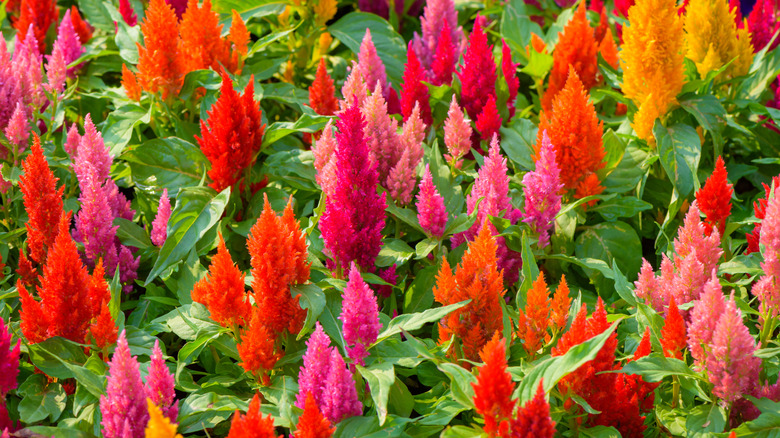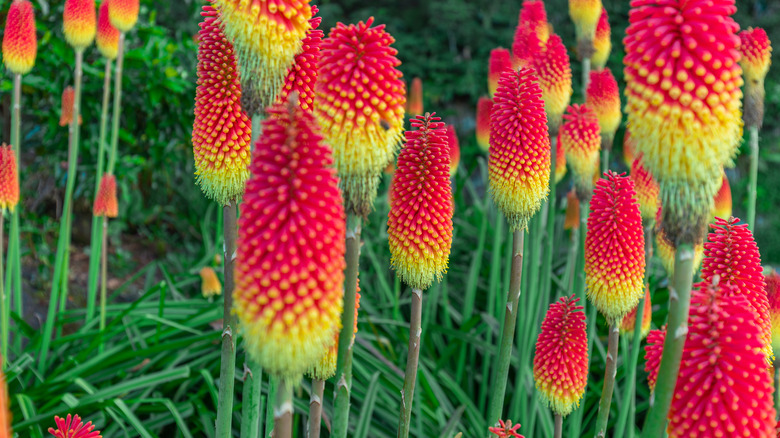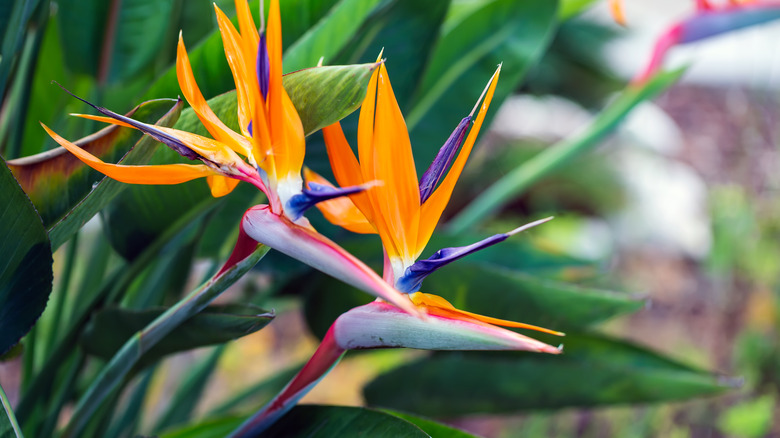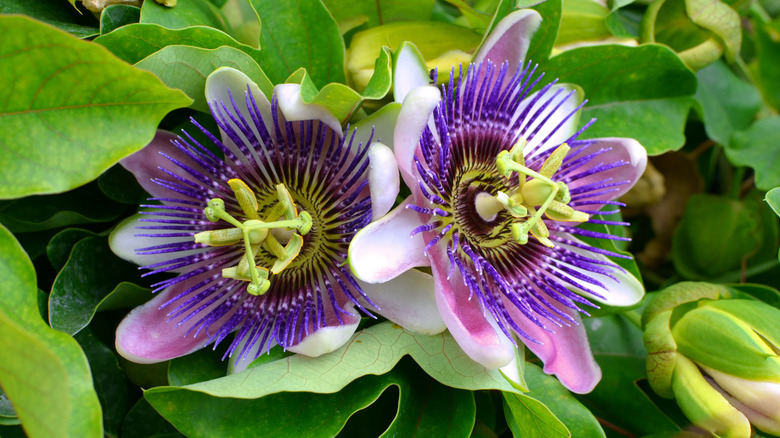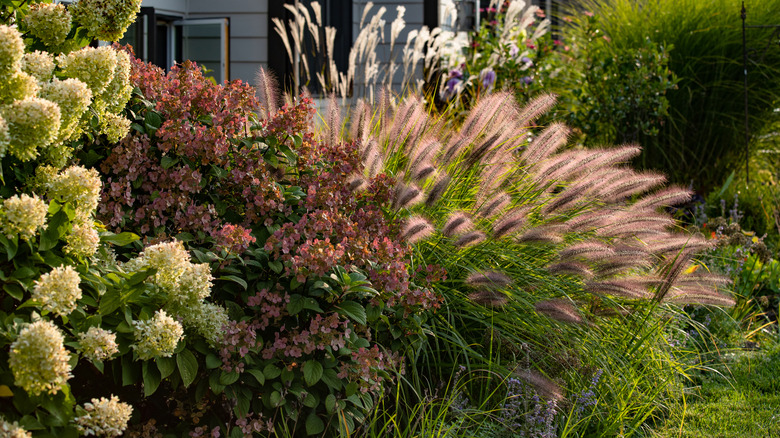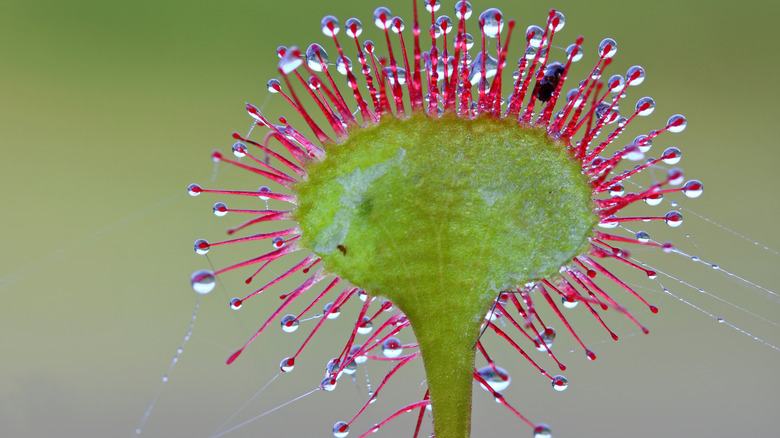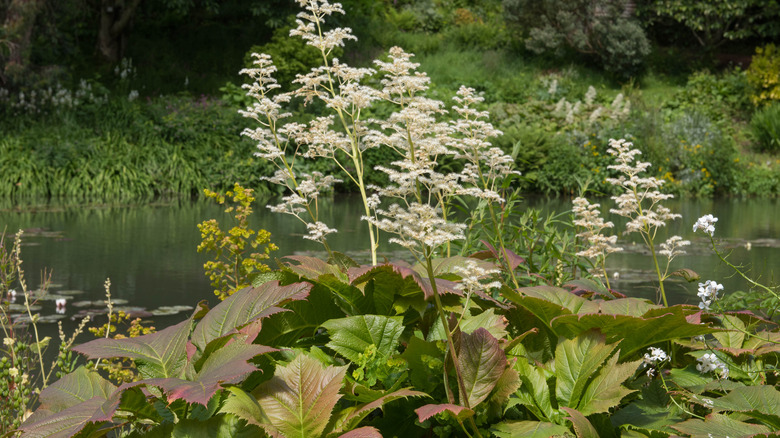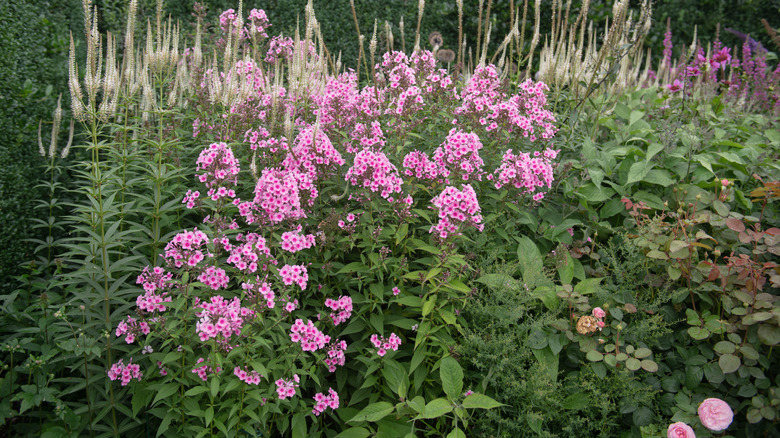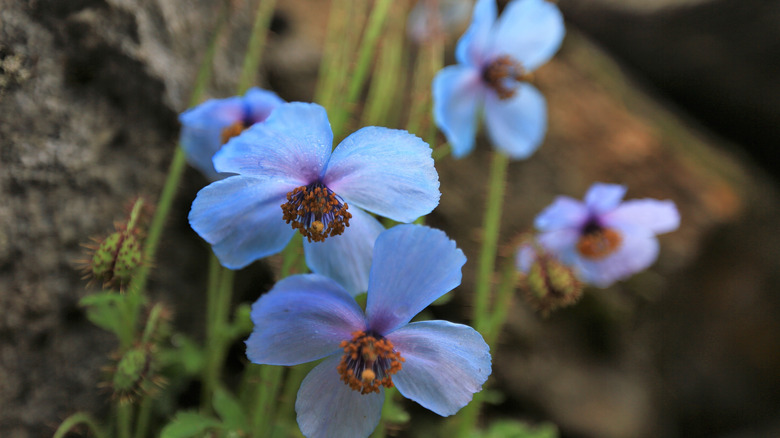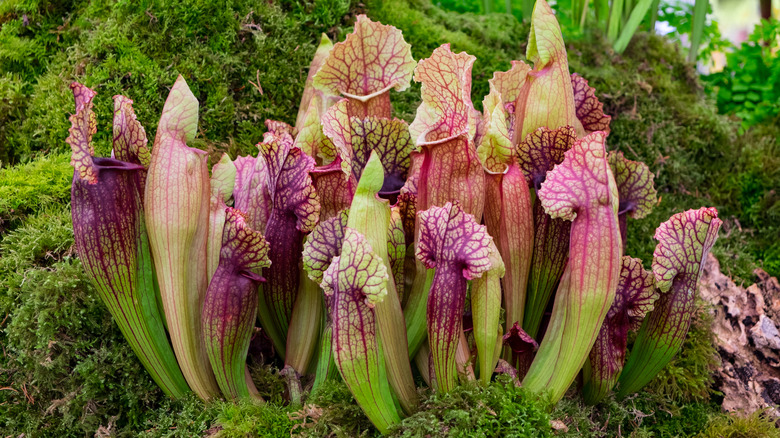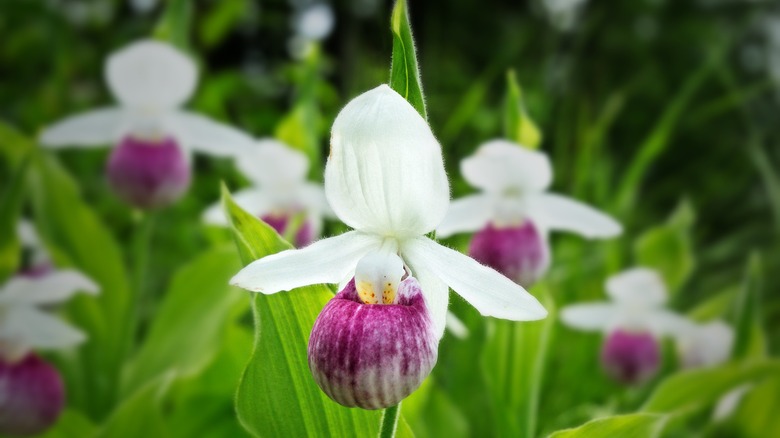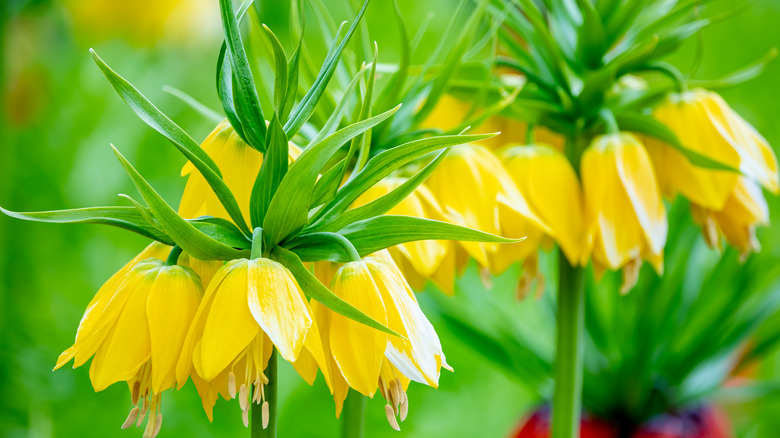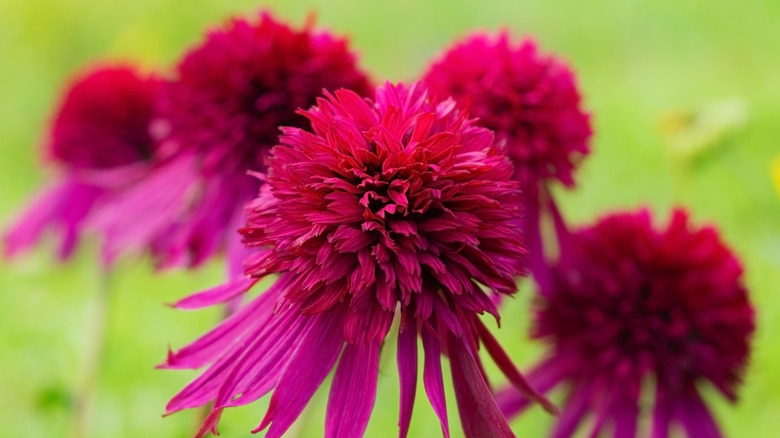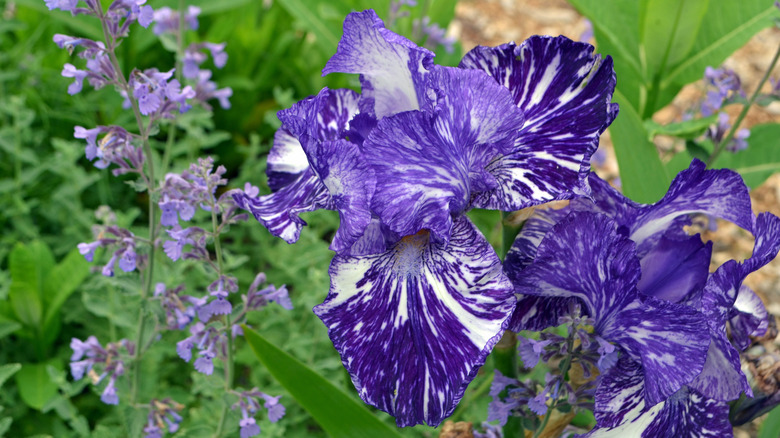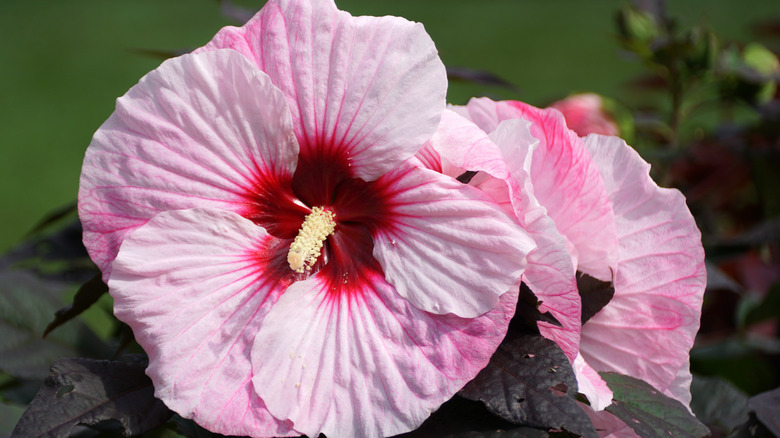15 Unique Flowers That Will Have Your Neighbors Staring
Back in the late 1600s to the mid-1850s, having a beautiful flower garden showcased your house; such fragrant, bright-colored spaces were often placed near the most important rooms so the view remained lovely for any guests you entertained there, according to the National Gallery of Art. During this time period, exotic and rare plants captured attention and were appreciated for their unusual appearance — and gave a sense of status, culture, and wealth, offering prestige to those with skilled and imaginative gardeners.
Not much has changed ... homeowners still seek to impress their friends, family, and neighbors with unique flower gardens, often featuring blossoms other than stalwart favorites such as impatiens, tulips, or petunias. While any bloom offers a way of coloring the world and enlivening your surroundings, the 15 flowers below will make passersby take a second glance because of their unique shapes, petals, colors, and scents. Get the neighborhood talking about your green thumb and inclination for arranging a flowerbed that attracts crowds eager to see something new.
1. Flamingo cockscomb
Just the name of it says it all: flamingo cockscomb (Celosia spicata). This bright annual with its interesting feathery tufts commands attention. Also known as celosia "flamingo feather," this orange, yellow, pink, or red flower likes regular watering but well-drained soil and a minimum of five hours of sunshine daily, according to Gardening Know How. It won't thrive in the cold, and you'll need to plant it after the last frost.
Bloom Season: summer
USDA Growing Zone: 10 to 12
Growing Conditions: full sun
Soil Type: moist, well-drained
Size: 6 to 36 inches (from My Garden Life)
2. Red hot poker plant
Red hot poker plants (Kniphofia) are tall and magnificent. Their long stalks are topped by colorful spikes of blooms and can resemble magical torches. This herbaceous perennial features more than 60 species, including dwarf versions that reach 1 to 2 feet high (compared with one type, Kniphofia uvaria, that can double that). These brighten your (and your neighbor's) view all season long, from spring to summer, shares The Spruce.
Bloom Season: spring, summer
USDA Growing Zone: 6 to 9
Growing Conditions: full sun
Soil Type: well-drained
Size: 1 to 4 feet, depending on species
3. Bird of Paradise
The Bird of Paradise (Strelitzia reginae) is as exotic as its name. The large, deep green leaves make people mistake it for a banana tree — and while the species are related, this South African native produces lovely flowers that look like cranes, per The Sill. The plant can become damaged in frigid temperatures, but you can mitigate this by mulching around its roots during the winter, and by planting it in a space that offers protection (where other plants act as a barricade from the cold), advises Gardening Know How.
Bloom Season: summer
USDA Growing Zone: 10 to 12
Growing Conditions: indirect to full sun
Soil Type: water weekly or biweekly; soil should appear dry before next watering
Size: 3 to 5 feet (via SF Gate)
4. Passion flower
The pretty passion flower (Passiflora spp.) with its white and purple flowers travels through its climbing vine, winding into your trellis or fence. This tropical plant features more than 400 species, and appear in the wild in South America and Mexico. They get their name from the early missionaries who used the plant's unique patterned flowers to demonstrate the passion of Christ, according to Gardening Know How.
Bloom Season: summer
USDA Growing Zone: 7 to 10
Growing Conditions: full sun
Soil Type: well-drained soil
Size: ½ inch to 6 inches
5. Fountain grass
Not only does fountain grass (Pennisetum) produce a show-worthy mound of foliage, it also sprouts fuzzy white, pink, and red plume-like blooms in the late summer that can last until fall, depending on the variety you plant. The drought-tolerant plant will self-seed — a double-edged sword: It can fill any empty space, almost becoming invasive if you don't cut it back, explains Better Homes & Gardens.
Bloom Season: summer to fall
USDA Growing Zone: 6 to 11
Growing Conditions: sunny
Soil Type: well-drained
Size: 6 to 12 inches
6. Sundew
While many plants look poetic, the sundew (Drosera), one of the larger carnivorous plants, looks alien and fierce. Tentacles extend from their leaves, shining at the end with nectar — almost like morning dew is still attached, according to Grow Sundews. In reality, this is a sticky gland used for entrapping its prey. The amount the self-pollinating plant flowers correlates to the food it catches.
Bloom Season: spring and summer
USDA Growing Zone: 6 to 8 (via Aquascape Unlimited)
Growing Conditions: warm and moist environment; full to partial sun
Soil Type: wet
Size: up to 1 foot (per Gardening Know How)
7. Rodgers flower
This Rodgers flower (Rodgersia) features big leaves intermixed with spiky light pink blooms. The perennials, which are in the saxifrage family, offer five species, including the well-liked cultivar Elegans from the R. pinnata variety. Besides the pretty flowers, the plant's leaves captivate — with its leaves changing with the seasons, from a slight bronze to a deep green to a reddish-brown, as noted by The Spruce.
Bloom Season: spring/summer
USDA Growing Zone: 5 to 7
Growing Conditions: full sun (but needs extra moisture to prevent scorching) to shade
Soil Type: Wet, well-drained
Size: 3 to 4 feet
8. Nora Leigh Garden Phlox
The Nora Leigh Garden Phlox (Phlox paniculata Nora Leigh) clusters tiny, pale pink blooms together in a plume that beckon the bees, butterflies, and birds to visit. Besides beauty, the plant features a lovely fragrance that will attract you as well. Since the plant won't seed, it propagates from stem or root cuttings, notes Dave's Garden.
Bloom Season: summer to early fall
USDA Growing Zone: 4 to 8
Growing Conditions: full to partial sun
Soil Type: average water, not too wet
Size: 24 to 36 inches
9. Himalayan Blue Poppy
Ah, the Himalayan blue poppy (Meconopsis grandis) and its deep blue-hued, yellow centered rosettes. The genus contains about 40 species, including this hardy perennial. The saucer-shaped flowers and dark green leaves, which can become as large as 12 inches, will be the envy of the neighborhood — especially since it's long-living and will stick around for a while, as noted by Gardeners HQ.
Bloom Season: late spring to mid-summer
USDA Growing Zone: 5 to 7
Growing Conditions: partly shaded
Soil Type: well-drained soil
Size: 24 to 36 inches
10. Pitcher plant
The pitcher plant (Sarracenia purpurea) looks like modern art come alive, with its stacked burgundy pitchers that sport purple flowers atop think stalks. The carnivorous perennial excels at tempting insects to drink its deadly nectar that paralyzes them before falling inside the pitcher and feeding the plant. The pitcher might be deadly, but it adds primal color and beauty to any garden, according to Gardenia.
Bloom Season: spring to summer
USDA Growing Zone: 6 to 8
Growing Conditions: full to partial sun
Soil Type: moist, well-drained, acidic
Size: 10 inches to 2 feet
11. Showy lady's slipper
This orchid does provide a show: The showy lady's slipper (Cypripedium reginae) blooms for just two weeks, celebrating its magnificence with a fuchsia-stained petal below three white-colored ones. The perennial is the largest of its genus, and some say the most stunning, per the Vermont Lady Slipper Company.
Bloom Season: spring to summer
USDA Growing Zone: 3 to 6
Growing Conditions: 2 to 3 hours direct sunlight then partial sun/shade remainder of the day
Soil Type: moist, neutral PH
Size: 1 to 2 feet
12. Crown imperial
Certainly, the crown imperial (Fritillaria imperialis Rubra Maxima) feels like a bit of royalty is visiting your garden — even if the bloom disappears within two or three weeks. The perennial, with its bold, orangey-red big flowers that hang bell-like underneath a swath of green, pointy leaves stuns viewers with its unique beauty, says Gardenia.
Bloom Season: mid to late spring
USDA Growing Zone: 5 to 8
Growing Conditions: full sun or partial shade
Soil Type: well-drained
Size: 40 to 44 inches
13. Secret lust coneflower
Known to attract butterflies, birds, and bees, the sweet-scented secret lust coneflower (Echinacea) features big pom-pom orange-pink/orange-red flowers that offer whimsical delight. The deer-, rabbit- and drought-resistant flower will keep blooming all season long if you deadhead it, as per Grow Joy.
Bloom Season: summer to fall
USDA Growing Zone: 4 to 9
Growing Conditions: full sun for six hours or more
Soil Type: moist to dry soil, well-drained
Size: up to 30 inches
14. Batik bearded iris
Like the shirt, the batik bearded iris (Iris germanica) features streaks in its design. The deep purple flower is etched with white lines that blend into the petal like irregular splashes — and make every bloom unique. Drought or beast (well, at least, deer and rabbits) won't bother the hardy plant, as noted by High Country Gardens.
Bloom Season: spring
USDA Growing Zone: 4 to 9
Growing Conditions: full to partial sun
Soil Type: well-drained
Size: 24 to 26 inches
15. Hibiscus perfect storm
Full of red-eyed white flowers, the hibiscus perfect storm (Hibiscus moscheutos) is a leafy shrub that's perfect for many uses, including as a border, part of a bed, or in a container on your patio. The blooms will stay vibrant all season, showing a pop of color amid the dense green and black-purple leaves. Keep it flourishing for years by trimming it down each spring before it begins growing, per Gardenia.
Bloom Season: summer to fall
USDA Growing Zone: 4 to 9
Growing Conditions: full to partial sun
Soil Type: well-drained, alkaline or neutral
Size: 2 to 3 inches
